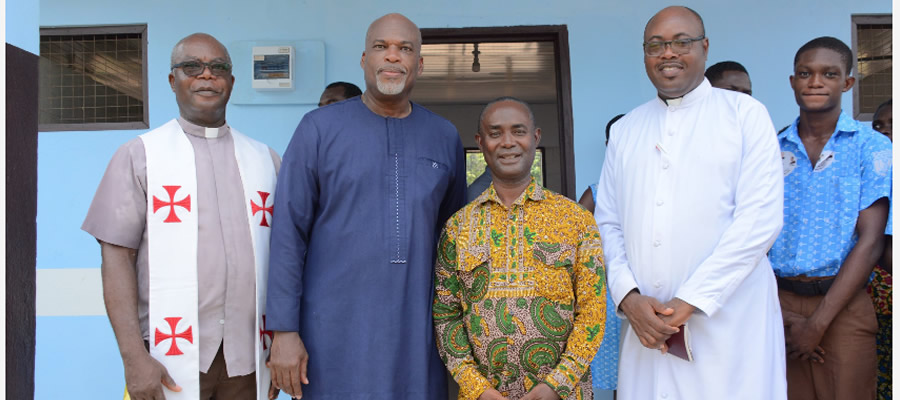

Physical Features
Location
The Nsawam Adoagyiri Municipality is approximately 23km from Accra the national capital. The Municipality is situated in the south eastern part of the Eastern Region between latitude 5’.45 N and 5’.58 N and longitude 0.07’W and 0.27’ W. The Municipality has a total population of 86,000.It is bordered to the south by the Ga and Tema Municipalities of the Greater Accra Region, to the north by Akuapem North Municipality, to the west by Suhum Municipality and Upper West Akim District.
Area
The Nsawam Adoagyiri Municipal covers an area of about 175 square kilometer, out of the total area of the Eastern Region. This shows that the Municipality covers 19,323 square kilometer Proportion of the total land area in the region. From the 2010 census, the Municipality has a population of 86,000 comprising of 49.7 Percent of males and50.3 Percent of females. The population is sparely distributed with a population density of approximately 491 Persons per kilometer square.
Relief and drainage
The relief of the Municipality is generally categorized into three main divisions. These are;
Densu plains, Ponpon narrows land and Akuapem – Togo ranges.
The Densu Plains cover the Western half of the Municipality with undulating and occasional isolated peaks such as the Amama hill and Nyanao hill above sea levels of about 5000 feet and 1000 respectively..
The plains constitute a potential for irrigation and mechanized farming in the Municipality. Nsawam, the Municipality Capital is located on the plains. Given the inadequate drainage facilities, parts of the town are liable to floods. Pools of stagnant water are also common in the rainy season leading to the breeding of mosquitoes and other vectors.
Municipality is drained by Densu River and its tributaries such as the Ntua, Pompom, Ahumfra and Dobro.
Climate
Weather conditions in the Municipality are generally cool due to its location in the wet semi-equatorial climate, coupled with the double maxima rainfall, which records an average annual rainfall of between 125cm and 200cm. The first rainy season is usually between May to June, with the heaviest rainfall experienced in June and a second rainy season between Septembers to October. This usually account for an entire year farming practice. The highest temperatures averaging 30? C are recorded between March and April. With the lowest average temperature of 26? C recorded in August.
Vegetation and soil
The main ecological zones that can be identified in the Municipality are the semi-deciduous forest and coastal savanna grassland. About ninety percent of the Municipality is covered with forest. Very little of the forest cover remain today due to uncontrolled exploitation for timber and bad farming practice such as shifting cultivation method of farming. There are various species trees but the most common are the Antirari-chlroopgroa, Aningeriarobusta, Chrysophyllum, Arcanum and Mansoniaaltissima. These trees support the socio-economic lives of the people when they are processed.
A the coastal savanna grassland cover the remaining ten percent land in the south and forms the transition zone between the costal savanna and rain forest region. The common grasses found are Andropogangayanus and Hyperemia rufa (spean and elephant grass).The geology of the Municipality is mainly sedimentary rocks metamorphosed to quartzites, schist, shale and philate, forming the Akuapem - Togo ranges.
In the most semi-deciduous forest zone, the principal soil is forest ochrosols.
Date Created : 11/27/2017 12:59:18 AM













 facebook
facebook
 twitter
twitter
 Youtube
Youtube
 +233 593 831 280
+233 593 831 280 0800 430 430
0800 430 430 GPS: GE-231-4383
GPS: GE-231-4383 info@ghanadistricts.com
info@ghanadistricts.com Box GP1044, Accra, Ghana
Box GP1044, Accra, Ghana